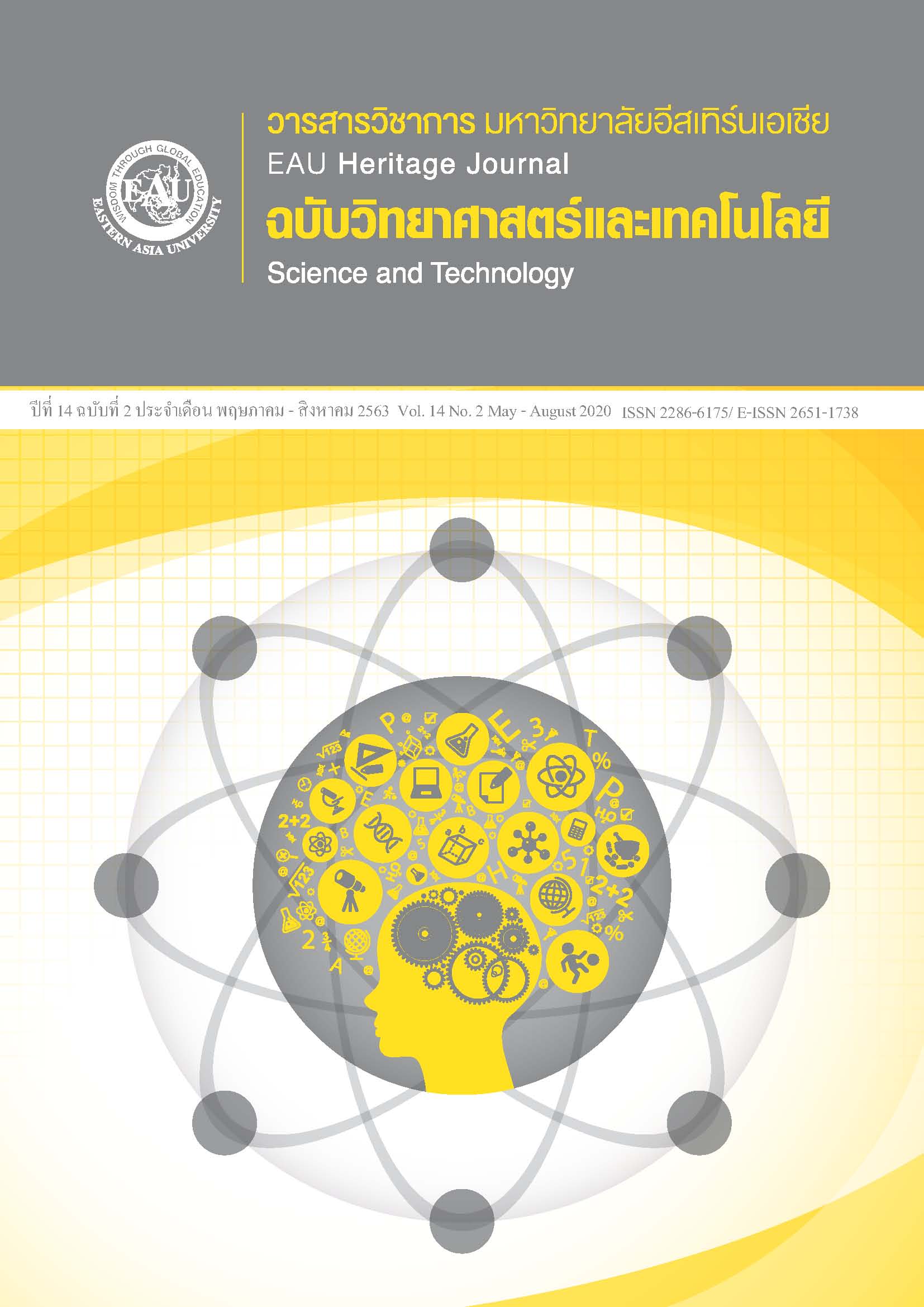การปนเปื้อนและผลกระทบของผลิตภัณฑ์ยาในสิ่งแวดล้อม
คำสำคัญ:
การปนเปื้อน, ผลกระทบ, ผลิตภัณฑ์ยา, สิ่งแวดล้อมบทคัดย่อ
ผลิตภัณฑ์ยาถูกพบว่ามีการปนเปื้อนและการสะสมอยู่ในน้ำผิวดิน น้ำใต้ดิน ดิน และสิ่งมีชีวิต ซึ่งแหล่งกำเนิดของผลิตภัณฑ์ยาในสิ่งแวดล้อม คือ น้ำเสียที่มีผลิตภัณฑ์ยาปนเปื้อนจากโรงงานอุตสาหกรรม บ้านเรือนและโรงพยาบาล และของเสียที่เกิดจากผลิตภัณฑ์ยาที่ถูกกำจัดอย่างไม่เหมาะสม การปนเปื้อนของผลิตภัณฑ์ยาในสิ่งแวดล้อมประกอบไปด้วย (1) การดื้อยาของเชื้อโรค (Antimicrobial Resistance--AMR) (2) การเปลี่ยนแปลงในระบบนิเวศ (3) การเปลี่ยนแปลงของสรีรวิทยาและพฤติกรรมของสิ่งมีชีวิต และ (4) ผลกระทบต่อสุขภาพของมนุษย์ ดังนั้นการปนเปื้อนของผลิตภัณฑ์ยาในสิ่งแวดล้อมกลายเป็นปัญหาที่เพิ่มความกังวล และจำเป็นต้องแก้ไขอย่างรวดเร็ว
เอกสารอ้างอิง
Academic Monitoring and System Development Center for Medicine. (2018). Drug system situation report. Bangkok: Academic Monitoring and System Development Center for Medicine. (in Thai)
Al-Odaini, N. A., Zakaria, M. P., Yaziz, M. I., Surif, S., & Abdulghani, M. (2013). The occurrence of human
pharmaceuticals in wastewater effluents and surface water of Langat River and Its Tributaries, Malaysia. International Journal of Environmental Analytical Chemistry, 93(3), 245-264.doi: 10.1080/03067319.2011.592949
Aus der Beek, T., Weber, F. A., Bergmann, A., Hickmann, S., Ebert, I., Hein, A., & Küster, A. (2016). Pharmaceuticals in the Environment-Global Occurrences and Perspectives. Environmental toxicology and chemistry, 35(4), 823-835. doi: 10.1002/etc.3339.
Brodin, T., Piovano, S., Fick, J., Klaminder, J., Heynen, M., & Jonsson, M. (2014). Ecological effects of
pharmaceuticals in aquatic systems--impacts through behavioural alterations. Philosophical transactions of the Royal Society of London. Series B, Biological sciences, 369(1656), 20130580. https://doi.org/10.1098/rstb.2013.0580
Chaiklieng, S. (2014). Toxicology in public health. Khon Kaen: KKUPrinting House. (in Thai)
Chiarello, M., Minetto, L., Giustina, S. V. D., Beal, L. L., & Moura, S. (2016). Popular pharmaceutical residues in hospital wastewater: Quantification and qualification of degradation products by mass spectroscopy after treatment with membrane bioreactor. Environmental Science and Pollution Research, 23(16), 16079–16089. doi: 10.1007/s11356-016-6766-2.
Chitescu, C. L., Lupoae, M., & Elisei, A. M. (2016). Pharmaceutical residues in the Environment-New European Integrated Programs required. REVISTA DE CHIMIE, 67(5), 1008-1013.
Chuntum, K. & Kamlangluea, K. (2017). Treatment with herbs and the ancient recipe of Traditional Medicine. Journal of Medicine and Health Sciences, 24(2), 48-57. (in Thai)
Department of Environment Quality Promotion. (2016). Pharmaceutical and personal care products contamination in Bang Pakong River. Bangkok: Department of Environment Quality Promotion. (in Thai)
Dzieweczynski, T. L., & Hebert, O. L. (2012). Fluoxetine alters behavioral consistency of aggression and courtship in male Siamese Fighting fish, Betta splendens. Physiology & behavior, 107(1), 92-97.
Ebele, A. J., Abdallah, M. A. E., & Harrad, S. (2017). Pharmaceuticals and Personal Care Products (PPCPs)
in the Freshwater Aquatic Environment. Emerging Contaminants, 3(1), 1-16.
Frisina, C.J. (2015). Let FDA Regulate Its Own Drugs: An argument for Narcotic control and enforcement under the Risk Evaluation and Mitigation Strategies (REMS). Loyola Consumer Law Review, 27(2), 238-283. Available at: https://lawecommons.luc.edu/lclr/vol27/iss2/3
Guiloski, I. C., Ribas, J. L. C., Piancini, L. D. S., Dagostim, A. C., Cirio, S. M., Fávaro, L. F., & de Assis, H. C. S. (2017). Paracetamol causes endocrine disruption and Hepatotoxicity in male Fish Rhamdia quelen after subchronic exposure. Environmental toxicology and pharmacology, 53, 111-120. doi: 10.1016/j.etap.2017.05.005.
Huerta, B., Rodriguez-Mozaz, S., Lazorchak, J., Barceloa, C. D., Batt, A., Wathen, J., & Stahl, L. (2018). Presence of pharmaceuticals in fish collected from Urban Rivers in the U.S. EPA 2008-2009 National Rivers and Streams Assessment. Science of the Total Environment, 634, 542-549.doi:10.1016/j.scitotenv.2018.03.387.
Jiamboonsri, P. (2019). Pharmacokinetics of Tannins. Journal of Science Ladkrabang, 28(1), 1-14.
Kieongarm, W., & Songthap, A. (2019). The effect of using analgesic drug sets contained with Steroids, non-medical indication. EAU Heritage Journal Science and Technology, 13(1), 27-37. (in Thai)
Kuster, A., & Adler, N. (2014). Pharmaceuticals in the environment: Scientific evidence of risks and its regulation. Philosophical Transactions of the Royal Society B Biological Sciences, 369(1656), 1-8.
Miller, T. H., Bury, N. R., Owen, S. F., MacRae, J. l., & Barron, L. P. (2018). A review of the Pharmaceutical Exposome in Aquatic Fauna. Environmental Pollution, 239, 129-146.
Office of the Council of State. (2019). Medicine Act B.E. 2510. Retrieved from http://www.krisdika.go.th/librarian/get?sysid=305008&ext=pdf (in Thai)
Patneedi, C. B., & Prasadu, K. D. (2015). Impact of pharmaceutical wastes on human life and environment. Rasayan Journal of Chemistry, 8(1), 67-70.
Poophalee, T., Koonsawat, C., Phuradchaphon, T., & Srisaknok, T. (2018). Explanations and handling of unused medicines in patients with type 2 diabetes and hypertension: A case of a community at Ubon Ratchathani. Thai Journal of Pharmacy Practice, 10(1), 3-13. (in Thai)
Praveenkumarreddy, Y., Akiba, M., Guruge, K. S., Balakrishna, K., Vandana, K. E., & Kumar, V. (2020). Occurrence of Antimicrobial-resistant Escherichia coli in Sewage Treatment Plants of South India. Journal of Water, Sanitation and Hygiene for Development, 10(1), 48-55.
Prichard, E., & Granek, E. F. (2016). Effects of pharmaceuticals and personal care products on marine organisms: From single-species studies to an ecosystem-based approach. Environmental Science and Pollution Research, 23(22), 22365-22384.
Roig, B., & D’Aco, V. (2015). Distribution of pharmaceutical residues in the environment (pharmaceuticals in the environment). London, United Kingdom: Royal Society of Chemistry.
Samarth, R. M., Khan, T., Srivas, S., Mishra, P. K., & Tiwari, R. R. (2018). Evaluation of Cyclophosphamide-induced Genotoxicity and Cytotoxicity in cultured human lymphocytes. Journal of Radiation and Cancer Research, 9(1), 28.
Sim, W. J., Lee, J. W., Lee, E. S., Shin, S. K., Hwang, S. R., & Oh, J. E. (2011). Occurrence and distribution of pharmaceuticals in wastewater from households, livestock farms, hospitals and pharmaceutical manufactures. Chemosphere, 82(2), 179-186.
Tang Aon, C. (2019). Pharmaceutical industry. Retrieved from https://www.gsb.or.th/getattachment/c6c0a8d5-e55c-4cf9-8a55-4ad044905f2b/IN_drug_6_62_detail.aspx (in Thai)
Toklu, H. Z., Antigua, A., Lewis, V., Reynolds, M., & Jones, J. (2019). Cosmetovigilance: A review of the Current Literature. Journal of family medicine and primary care, 8(5), 1540–1545.
Wangkiat, A. (2018). Medicine in the environment: Silent threat. Journal Critical Medicine, 9(37), 3-7. (in Thai)
Weber, F. A., Beek, T., & Bergmann, A. (2014). Pharmaceuticals in the environment the global perspective occurrence, effects, and potential cooperative action under SAICM. Retrieved from https://www.umweltbundesamt.de/sites/default/files/medien/378/publikationen/pharmaceuticalsin_the_environment_0.pdf
Zsuzsanna, J. S., Zsuzsanna, G. P., Tunde, J. K., Reka, H., & Istvan, C. (2012). Potential effects of pharmaceuticals and their residues in Aquatic Environment. Studia Universitatis Vasile Goldis Arad, Seria Stiintele Vietii, 22(2), 247-255.







